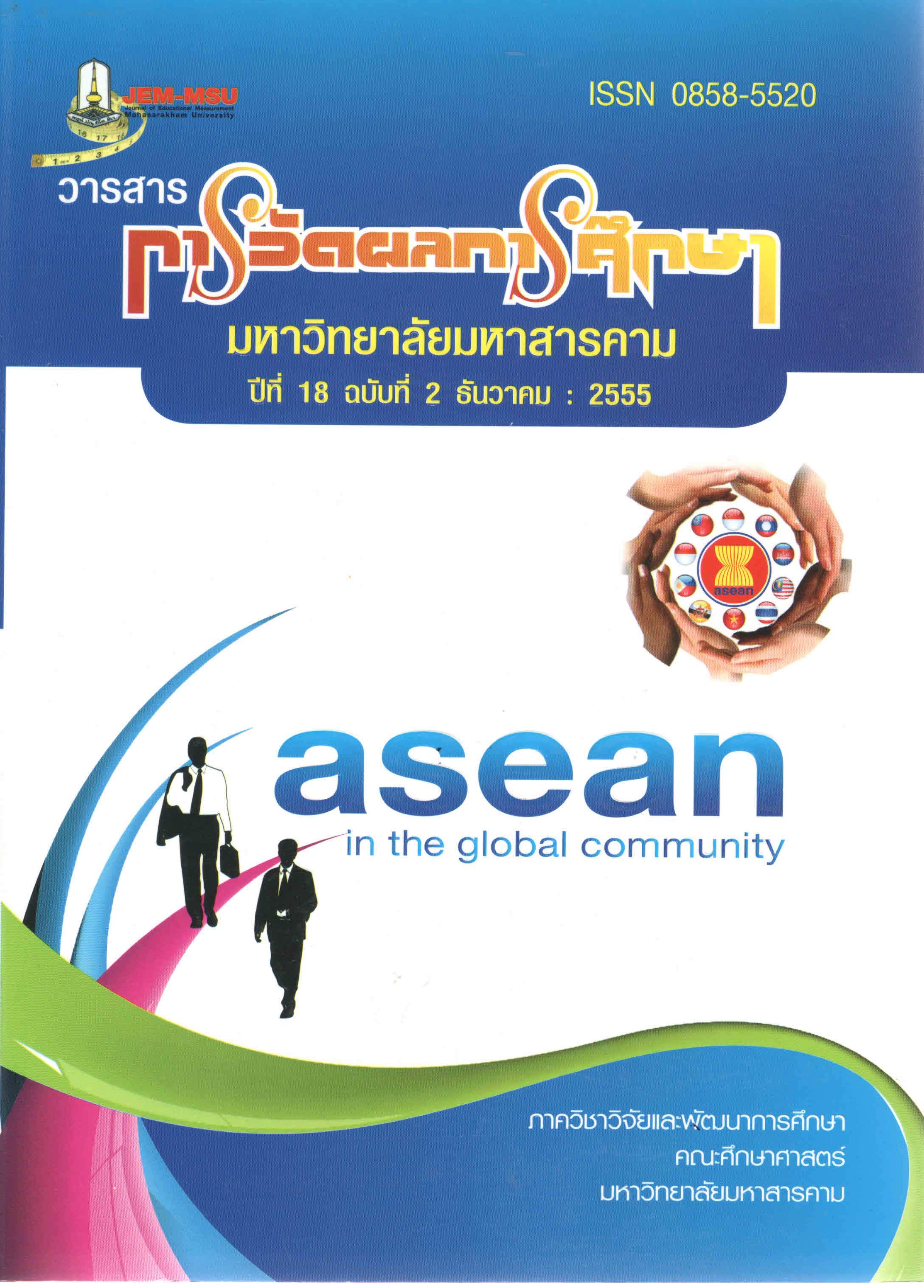The Development of Creative Thinking Practices in Science Using ProblemBased learning in Science Learning Standard Entitled Life and the Environment for Matthayomsuksa 3 students
Main Article Content
Abstract
The purposes of this study were 1) to develop a set of creative thinking
practices in science using problem-based learning in science learning standard
entitled Life and the environment for Matthayomsuksa 3 students with a required
efficiency of 75/75, 2) to compare creative thinking in science between before and
after learning of the students who learned using different approaches,. and 3) to
compare creative thinking in science after learning of the student. Who learned
using those two mentioned approaches. The sample used in this study consisted
of 40 Matthayomsuksa 3 students from 2 classrooms at Tesaban 5 School in the
second semester of the academic year 2011, obtained using the cluster random
sampling technique. The instruments used in the study were : 1) A set of creative
thinking practices in science using problem-based learning with a total of 5
practices with the high appropriate level ; and 2) a test of creative thinking in
science with difficulties ranging .43 - .47, discriminating powers ranging .39 - .61
and a reliability of .75. The statistics used for analyzing the collected data were
percentage, mean,standard deviation, t–test Dependent Samples and t–test
Independent Samples The results of the study revealed the following :
1. The developed set of creative thinking practices in science using
problem-based learning in science learning standard entitled Life and the environment
for Matthayomsuksa 3 students had an efficiency of 78.12 /79.80.
2. The students who learned using the set of creative thinking practices
in science using problem-based learning and those who learned using the teacher’s
handbook approach showed gains in creative thinking in science from before learning
at the .01 level of significance.
3. The students who learned using the set of creative thinking practices
in science using problem-based learning indicated higher creative thinking in science
than whose who learned using the teacher’s handbook approach
Article Details
The content and information contained in the published article in the Journal of Educational Measurement Mahasarakham University represent the opinions and responsibilities of the authors directly. The editorial board of the journal is not necessarily in agreement with or responsible for any of the content.
The articles, data, content, images, etc. that have been published in the Journal of Educational Measurement Mahasarakham University are copyrighted by the journal. If any individual or organization wishes to reproduce or perform any actions involving the entirety or any part of the content, they must obtain written permission from the Journal of Educational Measurement Mahasarakham University.

